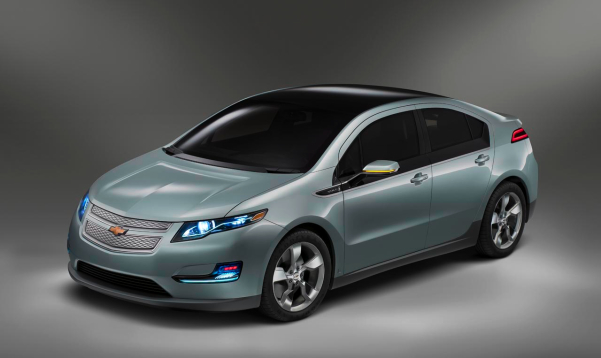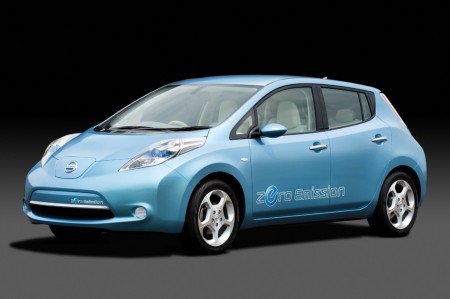New Electric Car Profiles and the American Auto Industry
Posted in The Gnovis Blog
The first car I ever drove was a 1989 Dodge Caravan. You remember this model. A dashing midnight blue color, seats 750, heavy, threatning sliding doors, seat belts that went only across the lap (none of this pretentious “across the chest” seat belting), and yes, the glorious faux-mahogany siding that gives it that 70’s look and feel. Although gas prices were a fraction of what they are now (about $1 per gallon) that classic ride was not the most fuel efficient car on the road. I’m going to guess that this may partly have to do with its aerodynamics and Lose Weight Exercise.

Over the past week, news and commercials have sprung up about a new generation of classic cars- the ones breaking into the electronic car revolution. Fresh out of the Copenhagen Summit on Climate Change (well, a couple months ago now, but relatively fresh), in the wake of Toyota’s chain of problems and recalls, and with the bailouts of American automakers, the emergence of these new vehicles on American highways has many implications for our direction and future. In this post, I’d like to take a quick break-down look at three such popular cars, and ask what this might mean for the American auto industry as a whole. The Chevy and Nissan models recently hinted that they will start production later this year.
Chevy : Volt
By plugging-in the new Chevy sedan and letting it charge over night (it needs about 8hrs for a full charge) the Volt will run for 40 miles without using any gas (approximately 75% of people commute less than 40 miles to work every day). After 40 miles, it uses gas to re-charge its own battery for extended distances. The Volt’s web site explains,
“Volt is an electric vehicle with a range extender. Well, what does that mean? It means Volt runs on electricity from its battery, and then it runs on electricity it creates from gas. Let’s assume you have a fully charged battery. Now, depending on the weather, the electrical features that are turned on and how you drive, you can drive up to 40 miles on the electricity stored in the battery — totally gas and emissions free. After that, its gas-powered, range-extending generator automatically kicks in to provide electrical power. So Volt can go for several hundred additional miles, until you can plug it in or fill it up again.”

The result is a vehicle that gets about 250 miles-per-gallon. What kinds of savings does this offer? Many are concerned about a trade off of their gas bills for their electric bills. If you travel less than 40 miles per day, meaning you’re only running on the full-night battery charge, you will spend about $1. It’s comparable to running the refrigerator for 24 hours a day. Models coming out next year will also be able to run on E85, an ethanol based bio-fuel.
Nissan : Leaf
While the Leaf is very similar to the Volt, it is closer to a “pure electric.” The car uses no gas, will be made by 100% recyclable materials in future models and boasts 0 emissions (the factory where it was designed and tested is even partially powered by wind). On a single charge, its battery can take it 100 miles and it takes about 4-8 hours to fully charge at home, or 25 minutes to get up to 80% at a high-speed charging station. Smaller than the Volt, the Leaf still seats 5.
What about pricing? Green.com’s autoblog writes,
“For the Volt, we’ve heard that the price would be somewhere between $40,000 and $45,000, but we don’t know if that’s before or after the government’s $7,500 rebate. The numbers we’re hearing for the LEAF are around $25,000 to $30,000 – again, not sure where the $7,500 fits in. Still, if we think that the LEAF could be $15,000 cheaper than the Volt, there is a possibility that you could buy a LEAF for your daily driver and then pick up a Versa (starting price $9,990) for when you want to go on longer trips.”

Tesla : Model S
Now, for my favorite. The Tesla Model S is the brain child of Silicon Valley’s Elon Musk, former starter of Paypal and his new, rocket ship-making company, SpaceX. Musk may very well be the Alexander Graham Bell or Ben Franklin of our time. The company writes, “With a range up to 300 miles and 45-minute QuickCharge, the Model S can carry five adults and two children in quiet comfort – and you can charge it from any outlet, without ever stopping for gas. World’s first mass-produced electric vehicle offers performance, efficiency and unrivaled utility for a base price of $49,900*, making it the only car you’ll ever need.” This new (family sports car???) claims to be faster than the second fastest Ferrari, and twice as fuel efficient as the Prius. To goes 300 miles on a single charge (you can buy the 160, 230 or 300 mile battery). It seats 7. It goes 0-60mph in 5.6 seconds. The base price is $49,900. Tesla cars are made and manufactured in California.

Aside from the fact that a new wave of electric cars would significantly cut US greenhouse gas emissions, this may also represent a large rebound for the American automotive industry. We are simultaneously seeing two things happening: 1) Toyota, the largest automaker in the world and largest in sales in the US faced with a crisis. The crisis isn’t just fiscal (car companies ride out recalls all the time, and recover)- its reputation is severely compromised. 2) There is a resurgence of innovation in American car companies, both from GM, who is now supported by the federal government, and Tesla, a rising boutique car dealer who is using an Apple strategy to become a prominent figure in the automotive world (start as a small, selective boutique firm, then move to large-scale produces, ala the ipod). With a large government stake in GM, is it possible that congress could support an even larger tax credit (currently $7,500) for those buying electric cars? Could government subsidization make the Volt the new Model T? This may result in a full rebound of the American car, American jobs, and a green future for the average American.
